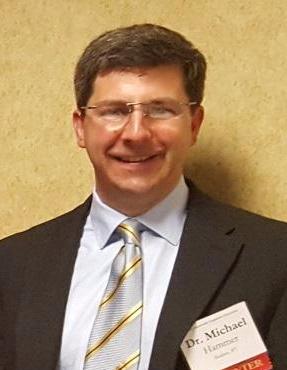Laryngeal Somatosensory Evoked Cortical Potentials in Spasmodic Dysphonia – An Initial Study | Michael Hammer, PhD, CCC-SLP, | University of Wisconsin-Whitewater

Dr. Michael Hammer’s team was recently awarded an NIH grant titled: “Sensory Interaction in Voice and Voice Disorders” as well as a co-funded grant from the NSDA and the Dystonia Coalition. The focus of Dr. Hammer’s clinical research team is to determine the somatosensory (touch), auditory (hearing), and brain mechanisms that contribute to the spasmodic voice interruptions experienced by individuals with spasmodic dysphonia.
Initial findings suggest that touch receptors within the laryngeal mucosa provide the central nervous system with information related to laryngeal movements and laryngeal position. Preliminary findings from Dr. Hammer’s team suggest that in individuals with spasmodic dysphonia, the central nervous system may be more highly attuned (or extra sensitive) to touch information from the larynx. This results in a defensive posturing of the larynx that results in the disruptions and strain to voice that individuals experience with spasmodic dysphonia.
Dr. Hammer’s research team is also focused on determining how changes in the somatosensory (touch) mechanisms of the larynx interact with the auditory (hearing) mechanisms that are important for controlling vocal pitch and loudness. They are examining these mechanisms in clinical participants with spasmodic dysphonia and in otherwise healthy participants without spasmodic dysphonia. The overall goal is to determine the pathophysiology of spasmodic dysphonia in the interest of refining specific treatment strategies.
They are seeking individuals with spasmodic dysphonia and healthy adult individuals without spasmodic dysphonia to participate in this research. For more information, please contact Dr. Hammer directly at hammerm@uww.edu.


